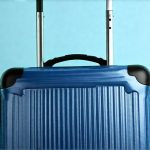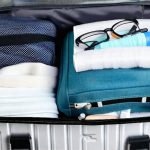Traveling should be about freedom, exploration, and creating lasting memories. However, for millions living with bladder issues – ranging from overactive bladder (OAB) to interstitial cystitis (IC), or simply a heightened sensitivity – the prospect of extended travel can feel daunting rather than exciting. The constant worry about access to restrooms, potential accidents, and disruption to carefully managed routines can overshadow the joy of discovery. This isn’t to say travel is impossible; quite the contrary! It requires thoughtful planning and proactive strategies that address individual needs and anxieties. A little preparation goes a long way in transforming travel from a source of stress into an enjoyable experience.
The key lies in acknowledging your limitations and embracing adaptability. Many people successfully navigate travel with bladder sensitivities, proving that it’s entirely possible to explore the world while managing their condition. It’s about shifting mindset – moving away from rigid expectations and towards flexible itineraries built around self-care and realistic assessments of potential challenges. This article aims to provide a comprehensive guide to creating “bladder-resilient” travel plans, focusing on practical tips and strategies that empower you to confidently embark on your next adventure. We’ll explore everything from pre-trip preparation to in-transit management and destination choices, all with the goal of minimizing stress and maximizing enjoyment.
Pre-Trip Planning & Preparation
Planning is paramount when dealing with bladder sensitivities during travel. It’s not about overthinking; it’s about proactively addressing potential issues before they arise. This begins well before booking flights or accommodation. Firstly, consult with your healthcare provider. Discussing your travel plans and any concerns you have can provide valuable insights and potentially adjustments to your existing management plan. They might suggest temporary modifications to medication schedules or offer advice on managing stress during travel, which can significantly impact bladder function. Consider discussing potential adjustments alongside a broader flow-safe lifestyle.
Secondly, research is crucial. Beyond the exciting aspects of a destination – landmarks, cuisine, culture – investigate restroom accessibility. Online resources like restroom finder apps (detailed later) and city guides often provide information about public restrooms, accessible facilities, and even the prevalence of cafes or businesses with readily available amenities. This isn’t just limited to tourist hotspots; consider transportation hubs like airports and train stations too. Knowing where you can reliably find a restroom provides peace of mind and reduces anxiety.
Finally, pack strategically. Beyond your usual travel essentials, include: – Extra layers of clothing (in case of accidents) – Wet wipes and disposable bags for discreet cleanup – always be prepared – Travel-sized bladder control products if you use them – even if you don’t usually need them extensively, having a backup is wise – A list of nearby hospitals or clinics at your destination – just in case. Packing a small “bladder emergency kit” can provide immense comfort and confidence throughout your journey. Don’t underestimate the power of feeling prepared!
Navigating Transportation Challenges
Transportation often presents the biggest hurdles for travelers with bladder sensitivities. Long flights, train rides, or even car journeys can be particularly stressful due to limited access to restrooms and unpredictable delays. For air travel, request an aisle seat when booking – this allows for quicker exits. Consider contacting the airline in advance to inquire about accessibility options or accommodations if you have specific needs. Be prepared to politely advocate for yourself if necessary.
During train or bus journeys, identify restroom locations along the route before departure. Check the transport provider’s website or app for detailed information. Don’t hesitate to use layovers strategically – even short stops can provide opportunities to use restrooms and alleviate anxiety. For road trips, plan your route with frequent rest stops in mind. Utilize GPS apps that highlight nearby amenities, including gas stations and restaurants with restroom facilities. Regularly scheduled breaks are far more beneficial than attempting to “hold it” for extended periods. Hydration is key, but timing everything can be easier if you’ve planned travel meals for urinary safety.
Furthermore, hydration is key, but timing is everything. Staying hydrated is vital for overall health, however, avoid excessive fluid intake immediately before or during travel. Sip water consistently throughout the journey rather than drinking large amounts at once. Be mindful of diuretic beverages like coffee, tea, and alcohol, which can exacerbate bladder symptoms. Consider alternative drinks if necessary.
Destination Choices & Activity Planning
The type of destination you choose can significantly impact your travel experience. Destinations with well-developed infrastructure and readily available public restrooms are generally more bladder-friendly. Major cities often have a higher density of facilities compared to remote or rural areas. However, don’t automatically dismiss less conventional destinations; careful research can reveal hidden gems that are surprisingly accommodating.
When planning activities, prioritize flexibility and avoid overly rigid schedules. Leave ample time between engagements – rushing is the enemy of bladder control. Instead of cramming multiple sightseeing stops into a single day, focus on fewer attractions and allow for frequent breaks. Consider activities with built-in restroom opportunities, such as museum visits or leisurely walks through parks. Building in these breaks can help you create pause points to avoid bathroom anxiety.
Utilize technology to your advantage. Restroom finder apps like Flush (available for iOS and Android) crowdsource information about public restrooms, rating them based on cleanliness and accessibility. These apps can be lifesavers in unfamiliar locations. Additionally, consider joining online communities dedicated to bladder health – these groups offer a wealth of practical advice and support from fellow travelers who understand the challenges firsthand.
Managing Stress & Anxiety
Stress is a major trigger for many bladder conditions. The anxiety associated with travel itself—concerns about restrooms, delays, or unexpected events—can exacerbate symptoms and lead to increased urgency and frequency. Therefore, incorporating stress-management techniques into your travel plan is essential.
Practicing mindfulness and deep breathing exercises can help calm your nerves and reduce anxiety levels. Before your trip, try meditation apps or guided relaxation videos to familiarize yourself with these techniques. During travel, take a few moments throughout the day to focus on your breath and clear your mind. Don’t be afraid to prioritize self-care activities that help you relax and de-stress – reading a book, listening to music, or taking a warm bath (if available).
Finally, remember to be kind to yourself. Travel is meant to be enjoyable, and setbacks are inevitable. If you experience an accident or encounter unforeseen challenges, don’t beat yourself up about it. Acknowledge the situation, address it calmly, and move forward. Focus on what you can control and let go of what you can’t. Accepting imperfection is key to a stress-free travel experience. Building in buffer time into your schedule reduces anxiety around potential delays or unexpected restroom needs. A calm mindset also helps when considering mental calm when bathroom access is limited.





















